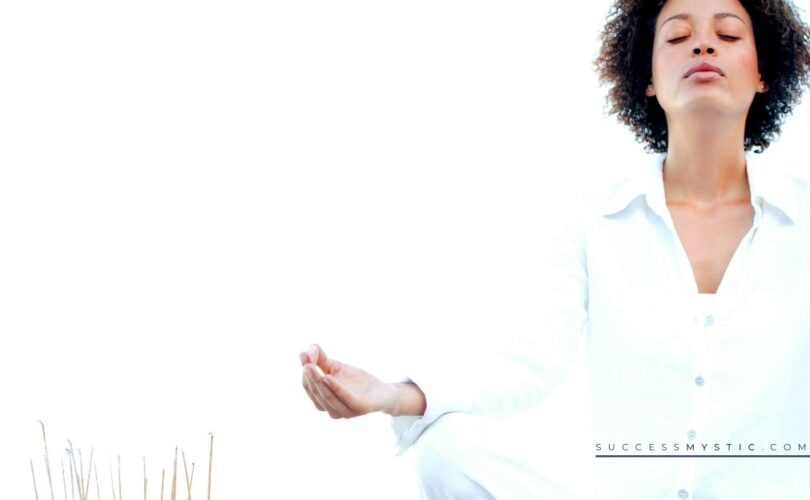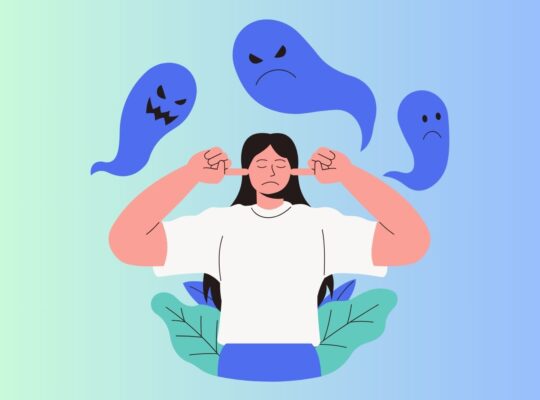What Is Calm
As defined by Merriam-Webster, calm is a period or condition of quiet and free from disturbance.
Simply put, it is the absence of strong emotions and reaching an inner place that lessens the grip of anxiety, worry, excitement, and troubles. The state of being calm is often something we think is just a function of circumstance, but we can actually play a role in helping our minds and bodies get to and maintain a state of calm.
This article works to outline how stress works against calm, why a state of calm is beneficial for the body, factors that can prevent calm, tips for promoting and achieving calm in your daily life.
How Stress Works Against Calm
Stress, often activated by triggers and stressors in our lives, is a complex process within the brain and body. The hypothalamic-pituitary-adrenal axis regulates the body’s hormonal response to stressful situations.
The hypothalamus instructs the pituitary gland to release a hormone. The pituitary gland then signals the adrenal glands to create steroid hormones called glucocorticoids. Two of these glucocorticoids are cortisol and adrenaline which are referred to as stress hormones (Suni, 2020).
Acute Versus Episodic Versus Chronic Stress
Stress tends to fall into one of three categories: Acute Stress, Episodic Acute Stress, and Chronic Stress.
Acute Stress
This type of stress tends to accompany moments of panic or dread, which typically subside after a short period of time. Physical symptoms in the body include increased heart rate, raised blood pressure, and feelings of irritability, anxiety, and sadness.
Some people also find themselves experiencing headaches, gastrointestinal issues, and back pain. Incidents leading to acute stress can include missing a work deadline, being late to an important meeting, having an unexpected expense, or nearly getting into an accident.
Episodic Acute Stress
This kind of stress is an accumulation of separate moments of acute stress. Essentially, it is like combining many moments of acute stress overtime. This type of stress can be complicated by issues like clinical depression which can manifest when these episodes of acute stress are recurring. They can also lead to attempts to alleviate stress via unhealthy patterns/behaviors such as overeating or binge drinking.
Chronic Stress
This is experienced when the trigger or stressor is persistent, or when the trauma is severe enough to have long-lasting impacts. Factors leading to chronic stress can be poverty, abuse, or trauma.
These types of experiences tend to cause people to internalize their circumstance which wears down on them mentally. Chronic stress can lead to anxiety disorders, depression, and negative behavior like alcoholism or drug use as a coping mechanism. Additionally, chronic stress can cause problems with how the HPA axis is able to process stressful situations and communicate with the rest of the body.
Stress works against calm by keeping our brain and body consistently aroused.
This heightened state of arousal leaves us feeling emotions, generally negative, that can lead to enhanced feelings of anxiety, depression, frustration, and anger among several others.
Stress and calm cannot co-exist, so getting a handle on stress is important for restoring calm, as well as preventing negative mental and physical health impacts brought on by prolonged exposure to stress.
6 Top Benefits of Being Calm
1| Greater Emotional Control
When we are calm, we are in a better position to rationalize through our feelings and emotions. Being calm gives us the ability to step back from our emotions and look at situations from a more well-rounded perspective.
We can then assess all sides of an issue or situation while setting our emotions aside and not allowing them to improperly influence our reactions or behavior This prevents us from being reactive and potentially engaging in harmful or negative behavior as a result of how we feel (Ten Benefits, 2019).
2| Enhanced Confidence
Being more calm also helps us to be more confident. Being calm means less excess worry, less negative thoughts, less fears, and less anxiety. Naturally, these impacts mean greater levels of relaxation which translate to relaxed confidence and a heightened belief in one’s own abilities.
3| Decreased Stress and Anxiety
Naturally, the calmer we are the less stress and anxiety we feel. Being calm helps us to better cope with stressful and anxiety-inducing situations, thereby reducing stress hormones and increasing feelings of happiness and satisfaction.
4| Improved Focus
Being calm also helps us to have better focus. When we are not calm due to stress or anxiety, our emotions cause sporadic thoughts and behaviors which make it challenging to commit to an idea or task. However, being in a state of calm soothes the mind and improves one’s ability to tasks and activities for prolonged periods of time. This enhanced focus then leads to greater achievement and better attentiveness to tasks.
5| Enhanced Creativity
With an enhanced sense of focus comes an increased measure of creativity. The ability to zone in on a particular activity, task, or problem allows us to commit more of our mental energy towards that activity, task, or problem.
When more of our mental energy is committed towards something, we activate mental concentration that is more likely to lead to new ideas and enlightened perspectives. The focus inevitably leads to the development of fresh perspectives and ideas that lead to problem-solving and idea generation (Ten Benefits, 2019).
6| Improved Wellness
When stressed and anxious, the body creates the stress hormone cortisol. When exposed to a prolonged period of stress, raised levels of cortisol can lead to a variety of negative health outcomes to include a weakened immune system, digestive problems, migraines, high blood pressure, heart issues, and chronic pain, among many others.
Elevated levels of cortisol can also lead to feelings of unhappiness and fear. When calm, cortisol levels are decreased and health returns or remains in its normal state.
This means physical, mental, and emotional health is improved leading to greater feelings of overall wellbeing. One is better able to embrace positive emotions and processes within the body and the mind function more optimally as a result (Annie & Will, 2020).
3 Factors Preventing Calm
1| Environment
The environment a person grows up in or is surrounded by can play a huge role in the prevention of calm. If a person is raised or residing in a stressful environment, those surroundings make it virtually impossible for them to feel calm. The environment will induce stress, anxiety, fear, and other negative emotions that keep them in an aroused or heightened state and unable to relax.
2| Anxiety Disorders
Anxiety disorders are a group of mental disorders characterized by significant feelings of fear and anxiety. These disorders severely impact one’s ability to live a functional life and interfere heavily with the completion of day-to-day tasks. The most common types of anxiety disorders that have the ability to prevent and reduce feelings of calm include:
- Social Anxiety Disorder
Social anxiety disorder is marked by a paralyzing fear of social situations and the belief that one is being judged or will be embarrassed by others. This leads to intense feelings of shame and isolating behaviors.
- Generalized Anxiety Disorder
Generalized anxiety disorder is characterized by intense anxiety linked to no specific factor or event. Anxiety is typically diagnosed as GAD when it persists for longer than six months and interferes profoundly in the ability to live one’s life.
- Obsessive-Compulsive Disorder
Obsessive-compulsive disorder is a condition marked by an overwhelming desire to perform certain rituals (compulsions) repeatedly, as well as the experience of unwanted and distressing thoughts (obsessions).
- Post-Traumatic Stress Disorder
PTSD manifests after bearing witness to or experiencing something traumatic. Such events can include an unexpected death, abuse, or going to war. The end result is traumatic episodes that can be sporadically triggered bringing on negative thoughts, emotions, and behaviors when the trauma is brought back to the conscious mind.
- Panic Disorders
Panic disorder involves spontaneous feelings of panic, impending doom, or terror that can trigger panic attacks. Signs of these attacks can include increased heart rate, inability to breathe, and chest pain, among others. These panic attacks can be randomly triggered and come on with or without warning.
3| Phobias
Phobias extend beyond the level of fear and can be defined as a fear that is unreasonable in its degree or nature. Phobias cause people to change their lifestyle as a means of managing it. Phobias cause those who suffer from them to have increased stress levels, heightened anxiety, and increased risk of depression.
20 Effective Techniques To Calm Your Mind
There are ways to go about the pursuit of calm. The following outlines 20 effective techniques for promoting mental calm.
1| Diaphragmatic Breathing
Taking deep breaths can bring about calm and aid in the management of negative thoughts and emotions. Research has shown that taking slow, deep breaths can lead to enhanced feelings of comfort and relaxation, while also reducing symptoms of anxiety, depression, and anger.
Diaphragmatic breathing specifically can be especially beneficial for bringing about a calming response, as it involves breathing where the belly expands in and out versus the chest rising up and down. This slows the heart rate and again brings the body to a place of calm where one is able to better ration and reason.
2| Eat Well
Research suggests that there are certain nutrients present within certain foods that can work to bring about feelings of calm and relaxation. Omega-3 fatty acids, green tea, and dark chocolate (in moderation) all possess nutrients that deal with the neurotransmitters in the brain and help to ease anxiety by releasing stress- relieving signals.
3| Get Physical
Exercise can be quite beneficial for promoting calm in the body. Evidence suggests that only 20 minutes of exercise can aid in the reduction of symptoms of anxiety. Physical activity encourages the body to release endorphins that boost mood and increase relaxation.
Additionally, exercise can protect people from developing some mental health conditions and reduce symptoms of depression and anxiety.
There is also research to suggest that as the temperature of the body increases with exercise, the neural circuits responsible for controlling cognitive function and mood are altered, including those that impact the neurotransmitter serotonin. Similarly, this response is believed to be linked to stress reduction, mood-boosting, and enhanced relaxation.
4| Go Outside
Time spent outside can work wonders for promoting relaxation and inducing calm. Research suggests that getting some sun can increase the release of serotonin in your brain, which can improve your mood and leave you feeling more at peace.
A 2020 research review found that spending just 10 minutes outside can improve mood, amongst other physical benefits.
5| Write It Down
Journaling is a technique whereby you write down your anxious thoughts and feelings as they arise. Journaling allows for the release of anxious thoughts that can
lead to enhanced levels of stress. This release of worrisome thoughts and feelings reduces feelings of anxiety and brings about relaxation and calm. A 2009 study of college students found that those who did expressive writing experienced less depression, stress, and anxiety after a period of 2 months as compared to a group of their peers who did not participate in the expressive writing.
6| Listen To Music
Music has long been linked to increased relaxation. A 2013 study showed that listening to music prior to a stressful situation can help the nervous system relax once the situation is over, helping to manage levels of stress and anxiety.
Music such as classical or soothing sounds like rainfall has particularly been shown to decrease cortisol (the stress hormone) and induce mental relaxation.
7| Meditation
Meditation can be a huge asset in the pursuit of internal calm. Meditation is the practice of continuous deep focus on an object for a prolonged period of time.
Meditation can aid the mind in pivoting from a stressed and anxious response to a state of calm. A 2018 study found that even just one hour-long meditation session can significantly lower levels of anxiety and stress.
8| Self-Care
Self-care is the practice of taking actions to preserve or improve one’s health. Self-care can include activities such as going for a walk, getting a massage, talking to a
friend, or anything that you deem as beneficial for improving your health, which includes mental health. Self-care can be beneficial when it comes to anxiety because the act of caring for yourself can relieve stress and tension, effectively promoting calm.
9| Take A Bath
Research shows that just 10 minutes spent bathing in hot water can lead to better mental and emotional health. A 2010 study found that bathing regularly promoted calm and led to better sleep. Evidence suggests that warm water eases tension and aching muscles which promotes reduced anxiety and promotes both physical and mental calm.
10| Chamomile Tea
Research has shown that chamomile is both relaxing and can significantly decrease anxiety as well as aid in the fight against depression. Research has shown that chamomile tea can function like a benzodiazepine which is a prescription drug that can reduce anxiety and induce sleep by binding to benzodiazepine receptors.
11| Good Posture
It may seem odd, but there is evidence to suggest that good posture can aid in bringing about a feeling of calm. Sitting upright can be linked to decreased depression, heightened energy levels, improved confidence, and enhanced calm. Good posture can also improve the ability to take deep breaths which can also contribute to feelings of calm.
12| Gratitude
Gratitude is the practice of finding those things in your life that you are thankful for. Whether big or small, the goal is to refocus attention away from stressful and anxious triggers and towards something more positive. This gives the mind a chance to calm down and decrease negative thoughts and emotions.
13| Rest Well
The act of closing your eyes alone can induce calm. Closing eyes can eliminate tension, relax muscles, and return the body to a state of calm. Adequate amounts of rest help to keep anxiety levels low and stress well managed by normalizing the brain’s anticipatory reactions and reducing overall anxiety levels.
14| Relaxing Scents
Studies show a connection between scents and feelings of stress or calm. A 2015 study found that people who smelled plants reported reduced levels of stress and anxiety and enhanced levels of relaxation. A 2017 research review suggested that essential oils like lavender could also aid in the management of anxiety, improve sleep, and boost feelings of calm (Booth, 2020).
15| Muscle Relaxation
Muscle relaxation is a technique that can promote calm throughout the whole body. A practice called autogenic training involves sitting or lying in a comfortable position and letting muscles go totally limp. Another practice of gradually tensing various muscle groups and then releasing them can also be practiced. Research
suggests that the tensing and relaxing muscle groups develop an awareness of bodies and tense areas, which helps induce a feeling of calm and relaxation.
16| Play With A Pet
Animals can be very therapeutic when trying to induce calm, hence the reason they are often used in treatments and therapy. Having a pet or regular play with animals can improve mood and reduce stress, leading to enhanced calm. A 2019 study showed that just 10 minutes of interactions with a pet led to a significant reduction in the stress hormone cortisol. While a study conducted in 2002 found that people with pets were better able to manage stressful situations.
17| Have A Laugh
Laughter has long been linked to reduced anxiety and an increase in positive feelings. In a 2017 study, researchers found that laughing regularly can lead to greater feelings of calm over time.
18| Adopt A Mantra
Mantras aid people in focusing on more logical thoughts and help us to move into a calmer headspace. A 2015 study showed that repeating a word or phrase to oneself works to quiet the part of the brain that leads the mind towards stress and anxiety.
19| Socialization
Socialization is a strong tool for helping to induce calm. When we remain in community with family and friends, we have people in our lives who can help us stay grounded, refocus on more positive objects, and be present to support us when we find ourselves dealing with stress, anxiety, or other negative thoughts and feelings. The presence of others can help us to feel the support we need and help us feel more relaxed, joyful, and at ease.
20| Relaxation Techniques
Practicing relaxation techniques can help us to refocus our energy and attention to more positive things, while simultaneously decreasing our stress and anxiety levels.
When we engage in practices like breathing, yoga, or aromatherapy we can get a hold of anxious thoughts and bring ourselves back to a place of calm.
Special Considerations
On some occasions, getting to a state of calm is something that requires more specialized help. There are resources and support available for individuals who find they need more assistance to manage emotions or cope with challenging situations.
The key is understanding the type of resources that are available, when they are most appropriate to be consulted, and how to access them so that they can be appropriately utilized.
1| Doctors
Doctors are medical professionals who are trained to medically diagnose conditions that may be contributing to a lack of calm such as depression or anxiety disorders.
Talking to your healthcare professional honestly and openly about the scope of your anxiety can help them reach a diagnosis and develop a care plan for you that may include other professionals and tools to help in the management and treatment of your anxiety.
2| Therapy
Therapy can be another support used to work through negative emotions and events that may be interfering in one’s ability to get to a state of calm. Therapists and counselors have been trained to help in the development and implementation
of techniques, as well as offering tools to aid in the management of stress, anxiety, depression, and other calm preventing conditions and ailments.
3| Medication
In some instances, medication can be a great support for individuals who find that there is perhaps a chemical imbalance or another factor requiring more serious treatment. Medications such as benzodiazepines can be prescribed to combat anxiety. Also, SSRIs can be prescribed to combat depression.
4| Support Groups
Support groups can be another method of helping to promote calm. Sometimes we just need a safe space to decompress and talk out our feelings and emotions without judgment.
Being about to release those things to a group of understanding peers can promote relaxation physically and mentally and help promote calm, while also decreasing the risks of anxiety and depression.
Final Thoughts
Life can be stressful, and we will constantly be faced with scenarios and triggers that seek to make us feel more stressed and less calm. However, we can take back control and take measures to calm our mind. If we are really effective, we can act preventatively to keep ourselves in a state of calm so that we aren’t so negatively impacted by outside stressors.
However, by knowing techniques and tips for getting back to a state of calm we can take the necessary measures to manage our emotions and reduce stress and anxiety so that we can be calm once again.
Doing so proves to be good for not only our mind but also our bodies by enhancing confidence, improving focus, boosting creativity, and improving overall wellness, among other things.
Thus, being calm is something that can be beneficial for us and those around us. So, the pursuit of a state of calm as much as we can be is something we should aim to pursue in our daily lives.
Stay Calm And Take Care
References
Annie & Will. (2020, March 3). Just a few of the benefits of being calm. Venture1105. (*)
Booth, J. (2020). 18 ways to calm yourself down right now. Greatist. (*)
Cuncic, A. (2020, May 30). The best types of therapy to treat anxiety. Verywell Mind. (*)
Morin, A. (2020). How to cope with anxiety about coronavirus (COVID-19). Verywell Mind. (*)
Ten Benefits. (2019, October 7). 10 benefits of staying calm. (*)







